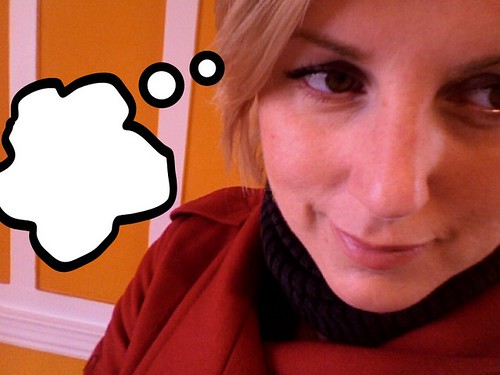We’ve all experienced them. Moments where we stumble and draw a blank. Moments where we forget someone’s name… someone very familiar to us but for some reason it is just gone and the panicked whirring of your mind cannot bring it back to you. The more you strain, the worse you seize up. Or that word… that perfect word that is just on the tip of your tongue, but can’t seem to let go and spring forth.
This is prevalent in my writing as well. My pen streaks across the page, the words flowing easy, and then a thought that involves a word that is similar to synchronicity, but not quite so philosophical in nature. The word suggests how two random things slammed together create an insight leading to something better, not because the universe wills it, just because you happened to think of it while thinking about something completely different. (The actual word I’m talking about is serendipity here, but that really isn’t the point of this post…).

The search for that perfect word smashes that free flow of words into the Hoover Dam. I am stopped until my brain releases the flood gate of knowledge about what that word is. When I can’t think of it, I might pick up Synonym Finder or go to an online thesaurus, but then again how do you find a word that is that specific if you don’t know what the word is in the first place. It breaks your momentum. It cracks open a door for your Inner Critic to whisper warnings to you and suggest that maybe you should do something other than write for a while.
I hate this. I found that the elusive, perfect word would occur to me as I continued writing, either a couple of paragraphs or pages later, so the time that I spent sprinting in place was a waste of time and energy. So now when I get stuck trying to remember a word, character name or stubborn concept, I just draw a line where the word might be, making a blank space to fill in when I do remember it later. If I don’t think the blank space is enough of a clue to remind me of my train of thought, I write a description containing several words that were “not good enough” in parentheses next to the blank to jog my memory later.
This transformed the writing process for me and helped me focus on production, not perfection. Soon, I expanded this concept to word processing documents by using brackets as flags for these breaks in my train of thought as well as writing notes to myself within the work so I could go back to them later after I’d finished the thought or had some time to follow-up on these notes. I use the bracket keys for two reasons:
- You don’t need the hold down a [SHIFT] key to type them
- It provides a rarely used character to easily find the thought later during a search of the document.
I use these brackets to direct me like a playwright provides direction in a screenplay. And I use them to encapsule anything that slows, stops or directs me somewhere other than writing. The comments suggest content additions that are needed but can’t be captured right now [need to find relevant quote about forgetfulness here]; identify need for additional content [list examples of books with a strong 1st person point-view here]; need additional research [find support for assertion about the growth of neural pathways in the brain]; suggest immediate edits [cliche, try again]; suggest edits for future drafts [this is awkward, reword this ASAP; these examples SUCK, get better ones]. I note missing/temporarily forgotten words with brackets surrounding ellipses […].
This approach allows me to spend writing time getting words down on paper and not flipping through pages of reference material, or going online to search for a toilet paper product engineering expert to be a possible source for quotes in your latest article for Flush Bowl Monthly [look up an actual market to insert here]. (See how that works? Leaving blank spaces and taking notes can create the production without sacrificing creativity or quality.)
After I finish a draft, I then go back and use the find feature to search for all of the open brackets [ in the work, and then I highlight the content within them and change the color to RED. Some writers use different colors or highlight these passages. I use a highlighter on my handwritten pages and notes to make these stand out. From there I can fill in the blanks during my next research session, batching the research tasks and doing them together instead of throughout the writing of the first draft.
Do you do anything like this? If you do, share your process with me in the comments below. If not, try it and let me know how it works for you.